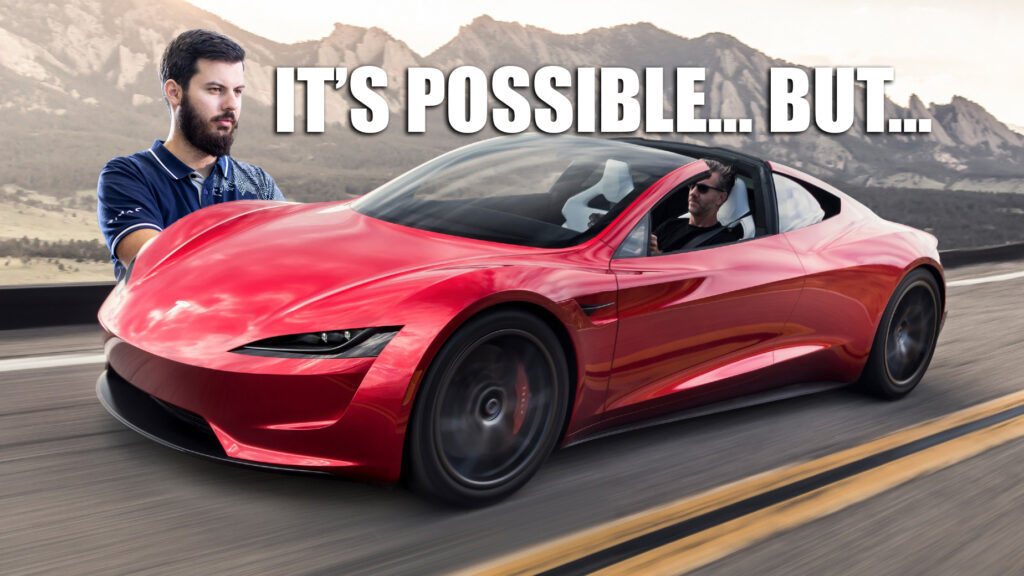Rimac has done the testing, the company knows how to do it too, yet there’s a good reason that they haven’t made an attempt
March 1, 2024 at 15:23
 –>
–> 
–>
Few individuals possess profound engineering expertise in constructing the fastest production electric cars. Recently, Elon Musk pledged that Tesla would unveil its new Roadster with an unprecedented 0-60 mph (96 km/h) time of under one second. Now, one of these experts, Mate Rimac, says that Musk’s company could pull it off, but that will come with some major trade-offs.
Musk took to his X platform, formerly Twitter, on February 27th to unveil the first new details about the upcoming Roadster in quite some time. According to the plethora of information he shared, he mentioned that the 0-60 mph time would be the least interesting aspect of it. In the past, he’s also hinted that it would have thrusters to help it achieve otherworldly acceleration.
More: New Bugatti Hypercar Gets A Huge V16 Hybrid Engine And It Sounds Amazing
advertisement scroll to continue
Now, the man at the helm of Rimac says that Musk might be on the right track. After all, his creation, the Nevera, is the current world record holder for the fastest production car to go from 0-60. It managed the feat in 1.74 seconds. Evidently, Rimac knows that it could’ve been even faster.
Tonight, we radically increased the design goals for the new Tesla Roadster.
There will never be another car like this, if you could even call it a car.
— Elon Musk (@elonmusk) February 28, 2024
It can be done..but
Responding to a question about the Tesla Roadster’s promised acceleration in a social media post, Rimac clarified his understanding. “It is possible with thrusters. We did the simulation. Problem is, you release the air in 2-3 seconds and then you have a lot of dead weight that you are carrying around (tanks, compressor, valves, nozzles etc.).”
What if Tesla is planning to use some sort of suction to gain extreme traction the way the Chaparral 2J race car did? Rimac has an answer there. “Same with fans – they just give you more grip but you need something like 30.000 Nm on the wheels to accelerate below 1 sec 0-100 km/h which means you need massive motors, inverters, gearboxes, driveshafts etc.”
Another caveat
Finally, there’s one more big caveat that Rimac says that Tesla will need to overcome. “Plus, the car has to be super light as otherwise you can’t create a lot of excess downforce with the fans as the tires would be overloaded very fast with any kind of car with “normal supercar” weight, especially electric. And then again you are carrying the weight with you when you are not doing 0-100. So thrusters are really the only way to go. But bring a lot of downsides as well.”
Electric vehicles are known for many things but being lightweight isn’t one of them. Notably, two electric vehicle projects that aim at nothing more than 0-60 dominance are stripped-down racers with very limited battery capacity. Even in that state, they’ve barely reached sub-1-second times.
To Rimac’s credit, he graciously provided this information in the comment section of his personal Facebook post about the new Bugatti V16. In the post, he revealed that it’s been “very hard to keep quiet about such an amazing development.” Will it prove ironic that he answered this Tesla-centric question on a post where some were doubting the realness of the V16? We’ll know by the end of the year.
H/T to Motor1!
